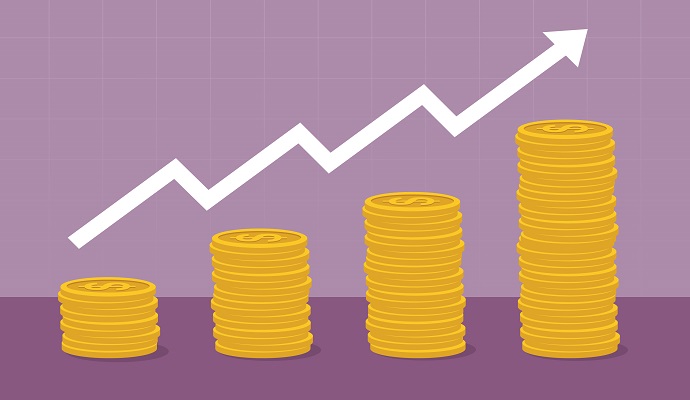New Study Expounds Harms of Drug Rebates on Patients, Healthcare
Delays, access restrictions, and price inflation are some of the ways drug rebates negatively impact patients and the healthcare system at large, A Pioneer Institute study found.

Source: Thinkstock
- Drug rebates are distorting the market for branded drugs and producing outcomes that may be harmful to both patients and the healthcare system, according to a recent study by the Pioneer Institute.
In the US, the pharmaceutical marketplace operates based on a rebate system, which includes offering a rebate payment to customers who achieve a certain level of market share for a new drug product.
The Pioneer Institute’s William S. Smith, MD, lead author of the study and visiting fellow in life sciences, identified five reasons why this process is harmful to both patients and the healthcare system.
The first major issue with the rebate system is delays, denials, and access restrictions for patients.
The rebate system requires that pharmacy benefit managers (PBMs) utilize “aggressive techniques” to manipulate the market shares of drugs to meet the start of their contracts, Smith explained.
READ MORE: States Sue Mallinckrodt Over Underpaid Medicaid Drug Rebates
To manipulate market share, PBMs force patients to “step” through a cheaper drug before they can receive the drug that their doctor prescribed prior to authorization.
Additionally, PBMs use the “fail first” and “tiering” methods, which forces patients to fail on a cheaper drug so that they turn to the more expensive one and have higher out-of-pocket costs for specific types of drugs, Smith explained.
This can cause serious care delays and access to care barriers, especially among cancer patients, says Ted Okon, executive director of the Community Oncology Alliance, an association of independent cancer practices.
Invoice price inflation is the second roadblock in the US rebate system, according to Smith.
A study by Harvard found that between 2012 and 2017, the average rebate increased from 32 percent to 48 percent. And an IQVIA report estimated that the prescription drug marketplace may grow to $600 billion by 2023. This leaves a great number of rebates in the healthcare system.
READ MORE: Court Tells Mallinckrodt to Pay $650M in Back Medicaid Rebates
High list prices affect a majority of patients directly, including both the uninsured and insured patients whose copays and deductibles are based on the drugs’ list price.
“Artificially high list price inflation, driven by manufacturers’ desire to offer deeper rebates, has the deleterious side effect of artificially raising out-of-pocket costs for patients,” Smith said.
An example would be if a drug’s list price is $1,000 per month, but its net price is only $520 per month. Since a patient’s coinsurance requirement may be 10 percent of the drug’s list price, out-of-pocket costs will total $100 rather than $52, Smith explained.
The third challenge in the rebate system is weakening the role of the pharmacist, largely due to PBM practices
“Spread pricing,” allows the PBM to pocket the “spread,” or the difference between what they are paid by a health plan for a drug and the amount the PBM pays the pharmacy.
READ MORE: Drug Prices Increased over 25% for a Third of Products
An example that Smith gave was if a PBM had a contract with a health plan to be paid $100 when a certain prescription drug is dispensed to a patient in that health plan.
The PBM can then sign a contract with a retail pharmacy to reimburse only $75 for that same prescription drug, which allows the PBM to keep the $25 spread.
Legislation to ban spread pricing has been proposed at the federal level, but has not yet been passed.
The fourth challenge with drug rebates is more expensive drugs in the healthcare system.
The growth in rebates for branded drugs has knocked generic drugs off the “tier,” with the lowest co-pay toward higher tiers where branded drugs typically were placed, Smith explained.
An Avalere study found that for the first time, Medicare Part D plans placed the majority of generic drugs on non-generic tiers, falling from 64 percent in 2016 to 47 percent in 2020.
Rebates are especially an issue in the biosimilar sector and may be one of the primary reasons that the uptake of biosimilars in Europe is outpacing uptake in the US.
For example, if a company that manufactures an original drug product offers a substantial rebate, this may block access to the biosimilar.
But Smith pointed out that although biosimilars have been slow to impact the market due to the use of rebates, biosimilars should be able to offer products at a discount to originator products because of their overall lower research and development costs.
The fifth and final challenge with the US rebate system is that with more than $100 billion worth of rebate checks being written each year, experts question whether quality of the healthcare system is improved by these large payments.
If manufacturers are hiking list prices to make room for deeper rebates, are outcomes being improved? Are patients saving money? And are physicians granted broader access to an array of drug therapies?
Smith argued that if rebates were designed differently, they could provide patients with lower out-of-pocket costs for a newer, better drug.
But more transparency will need to be required for PBMs to prove that rebate payments improve the quality of healthcare and save money.
“The one specific recommendation we make is that the public should be much more aware of how formulary design, out-of-pocket costs, and overall drug prices are very much determined by the rebate system,” Smith said.
“Patients and their physicians should be prompted to ask questions about the drugs that are preferred on their plan’s formulary or why their co-pays have been rising. For any PBM practices that may be dubious, we believe sunlight to be the best disinfectant.”
